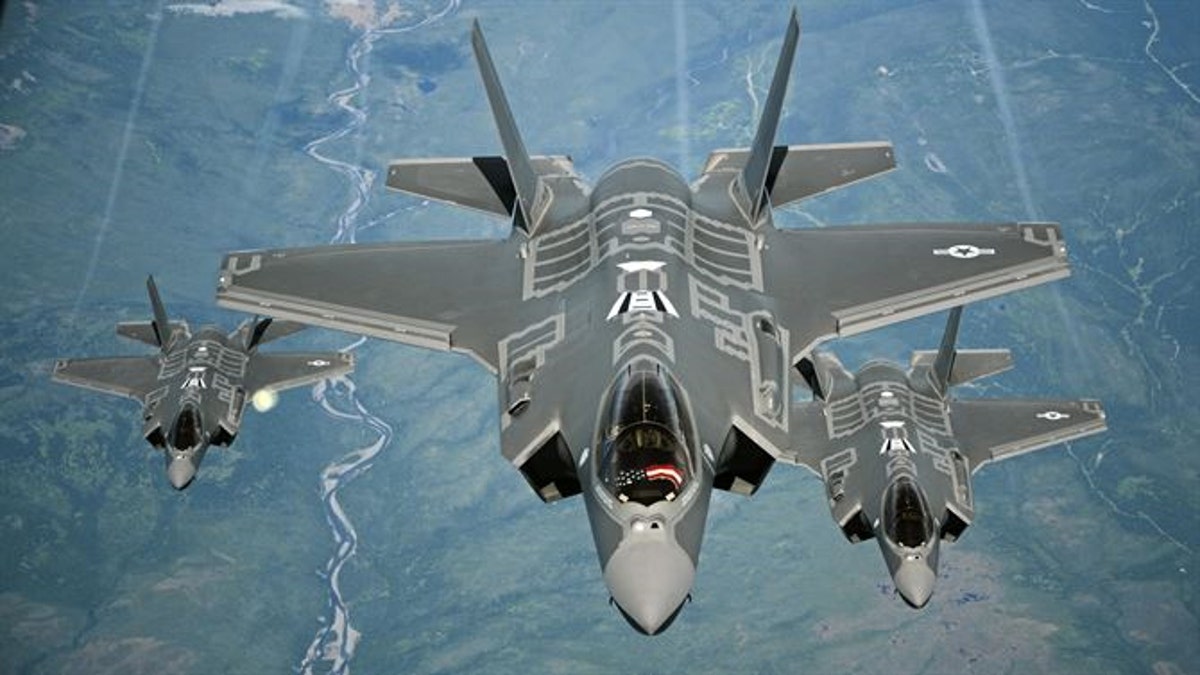Fox News Flash top headlines for September 2
Fox News Flash top headlines are here. Check out what's clicking on Foxnews.com.
A forward-operating, satellite-networked Air Force drone comes across a small, moving group of enemy surface ships heading toward vulnerable areas, when instant data is sent to Navy ships’ commanders and land-based Army weapons operators in real-time, enabling a coordinated, multi-pronged attack using deck-fired Tomahawk missiles fired from the ocean, land-based attack rockets and fighter jets armed with air-to-surface weapons.
This possible scenario, in which land, sea and air warriors and weapons system share information in real-time across vast, otherwise dispersed areas to optimize attack is precisely what the Pentagon intends with its new doctrinal and technical approach to future war.
The Army, Navy and Air Force each have secure information-sharing combat network technology programs. But what if those programs were combined and merged into one multi-domain military network able to optimize and combine coordinated land, sea and air attacks?
The question represents Pentagon thinking on the evolution of a program called Joint All Domain Command and Control, a technical initiative aimed at making sure otherwise disparate or segmented service combat systems are fully interoperable.
Perhaps a fighter jet comes across a large enemy mechanized combat formation approaching a port filled with enemy surface ships? Perhaps those ships are connected to enemy destroyers miles off the coast getting in position to fire upon U.S. armies? How would air, sea and land intelligence networks and information sharing technologies operate in unison?
NAVY ELECTRONIC WARFARE STOPS MULTIPLE ENEMY MISSILE ATTACKS AT ONCE
This question forms the heart of a long-standing Pentagon challenge geared toward ensuring all domains can operate in tandem during joint, multi-domain war.

F-35A Lightning II aircraft receive fuel from a KC-10 Extender from Travis Air Force Base, Calif., July 13, 2015, during a flight from England to the U.S. (U.S. Air Force photo/Staff Sgt. Madelyn Brown)
Air Force Vice Chief of Staff General Steven Wilson is now working with Army, Navy and Air Force weapons developers and networking specialists to engineer the technical standards and protocols needed to enable broad interoperability.
“JADC2 is not just for the Air Force but the entire Department," Wilson said referring to Joint All Domain Command and Control during a video interview with The Mitchell Institute for Aerospace Studies. "We need to get the right software to the cloud to network and connect the force. How do I connect the force and build this internet of things to allow every platform to connect with every other platform?”
Wilson mentioned the Navy’s Cooperative Engagement Capability networking program as well as a now-deployed network called Naval Integrated Fire Control-Counter Air or “NIFC-CA.”
NIFC-CA encompasses the mission aims of JADC2 because it integrates ship-based radar sensors with an aerial surveillance node such as an F-35 to detect approaching anti-ship cruise missiles from beyond the horizon, and cue a ship-fired SM-6 missile with plenty of time to track and intercept the threat.
NEW AIR FORCE STEALTH BOMBER ARRIVES IN JUST '2 YEARS'
The Army, Wilson explained, is progressing with a netted or “meshed” sensor system intended to track and take out approaching enemy threats across vast distances. While developed as an Army system to connect sentinel radar, Patriot missile interceptors and other weapons on a single networking system, the service’s Integrated Air and Missile Defense Battle Command System is multi-domain in scope.
“IBCS is really the main Army part of JADC2," Gen. John Murray, the commander of Army Futures Command, told reporters via telephone at a media roundtable in August. "It is a pathfinder to that,”
Army Vice Chief of Staff Gen. John Martin said JADC2 is a large part of the Army's Multi-Domain Operations strategy which, among other things, seeks to leverage the service's high-priority combat network.
MDO, Martin explained, is far more nuanced and complex, containing a host of overlapping variables such as cyber-hardening, the Army’s tactical network, air-sea integration and joint space connectivity, among other things.
“We seek the ability to enable any sensor and any shooter to have the right data in near real-time, to generate mass combat power across domains,” Martin said at a recent event at the Defense for Democracies Foundation.
PENTAGON DEPLOYS NEW SUB-LAUNCHED, LOW-YIELD NUCLEAR MISSILE
The concept here is to enable multi-domain combat maneuver in which armored vehicles, stealth bombers, surface ships and even submarines are no longer merely weapons platforms but “nodes” in a broader warfare network. Information itself and, as Martin put it, the ability to get target information from any sensor to any attacker and decrease latency, form the conceptual and technological foundation for modern warfare.
The Air Force is now advancing a comparable program called Advanced Battle Management System, a collection of networks and platforms intended to perform a similar mission.
“I want the Army system to feed information back up into the F-35. The F-35 is a flying computer,” Wilson said.
CLICK HERE TO GET THE FOX NEWS APP
The aim of JADC2, which fundamentally seeks to shorten sensor-to-shooter time and enable secure, yet ubiquitous sharing of combat crucial information in war, is to combine the functionality and operations of these Army, Navy and Air Force systems into one.
-- Kris Osborn is the Managing Editor of Warrior Maven and The Defense Editor of The National Interest --

